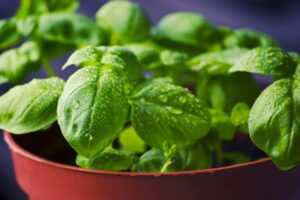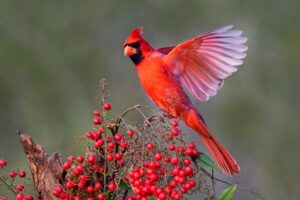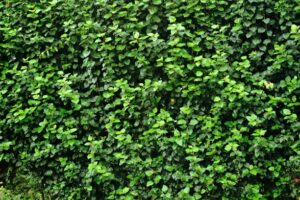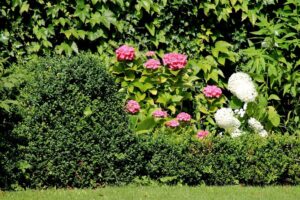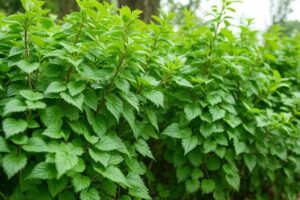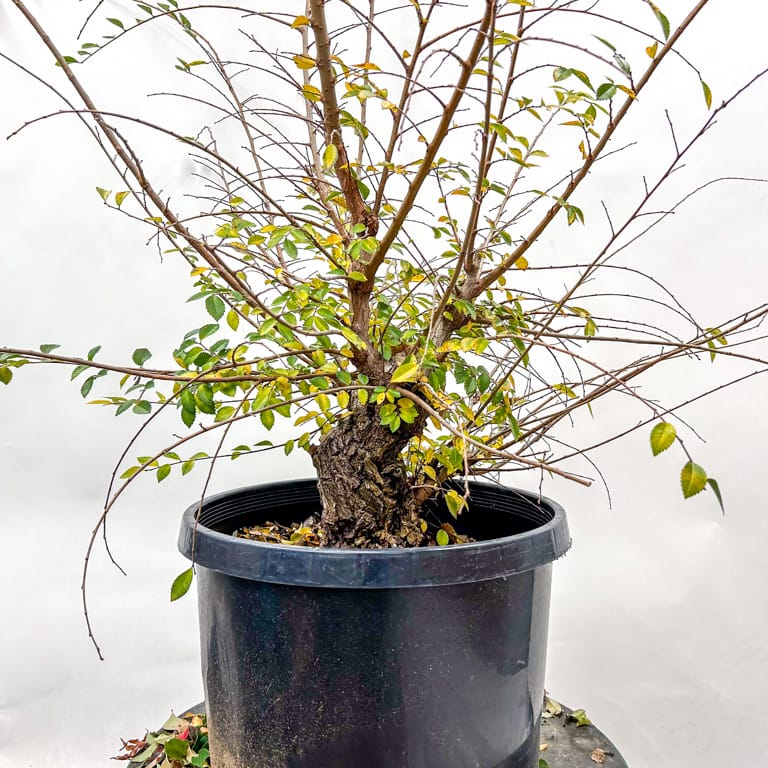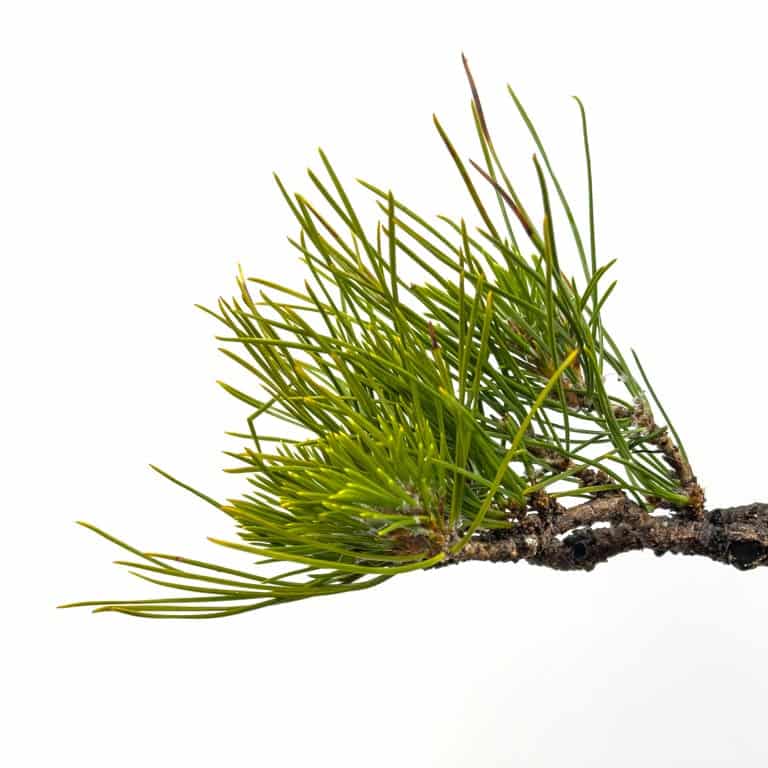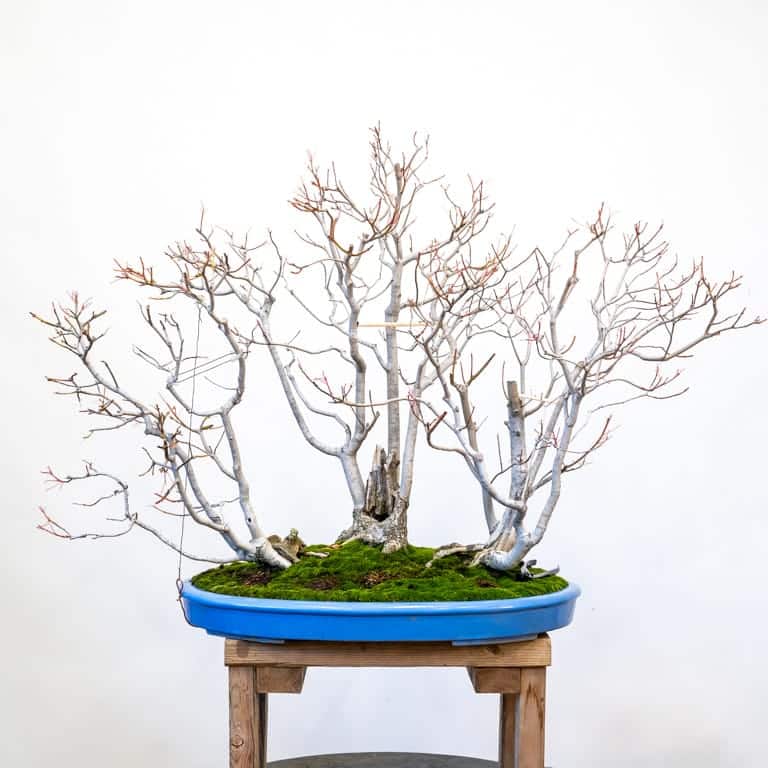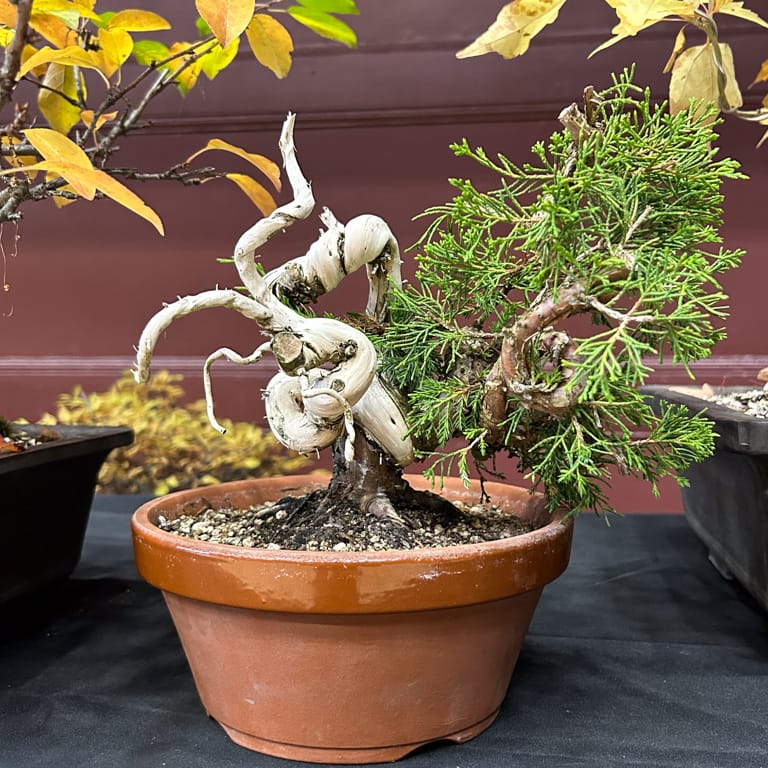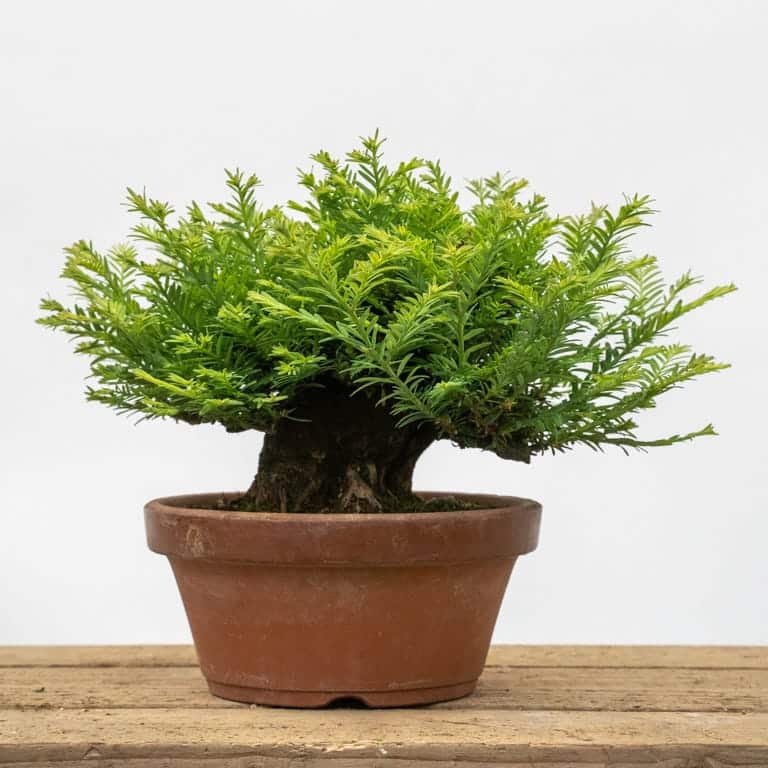A couple of years ago, I came across a great batch of cork bark elms at Lone Pine Gardens. It had been a while since I’d owned one, so I picked out my favorite and brought it home.
Field-grown cork bark elm – December, 2022
I don’t typically do much work on trees until I get a look at the roots, so I shortened the branches to make it easier to work with the tree but avoided making any big cuts.
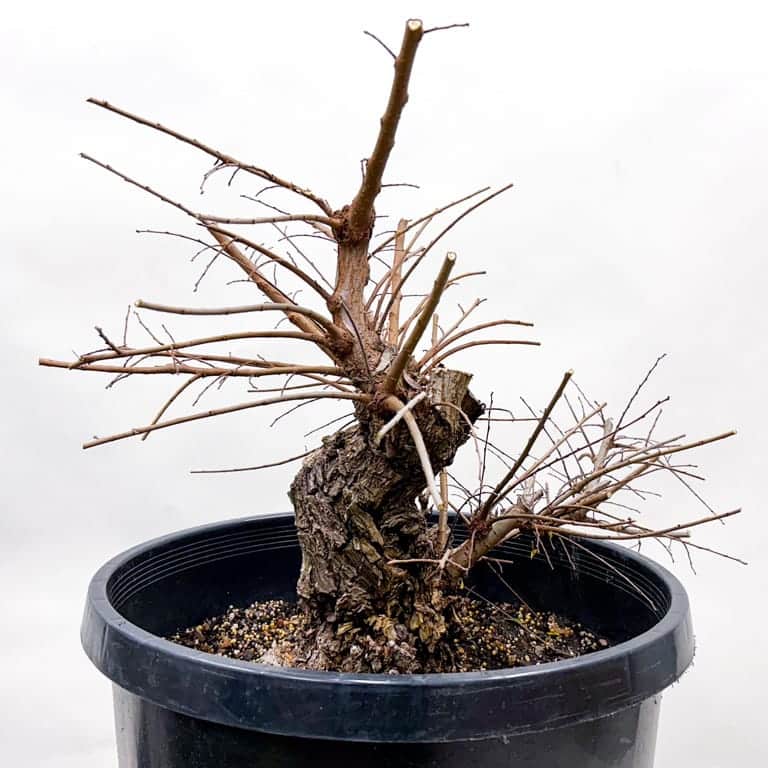
After reducing the branches
Over the next two years, I limited work to bare rooting the tree (to remove the field soil) and reducing branch stubs (so the wounds on the trunk could begin to heal). I left the rest of the branches alone to help the tree recover from this work. Here’s what it looked like earlier this week.
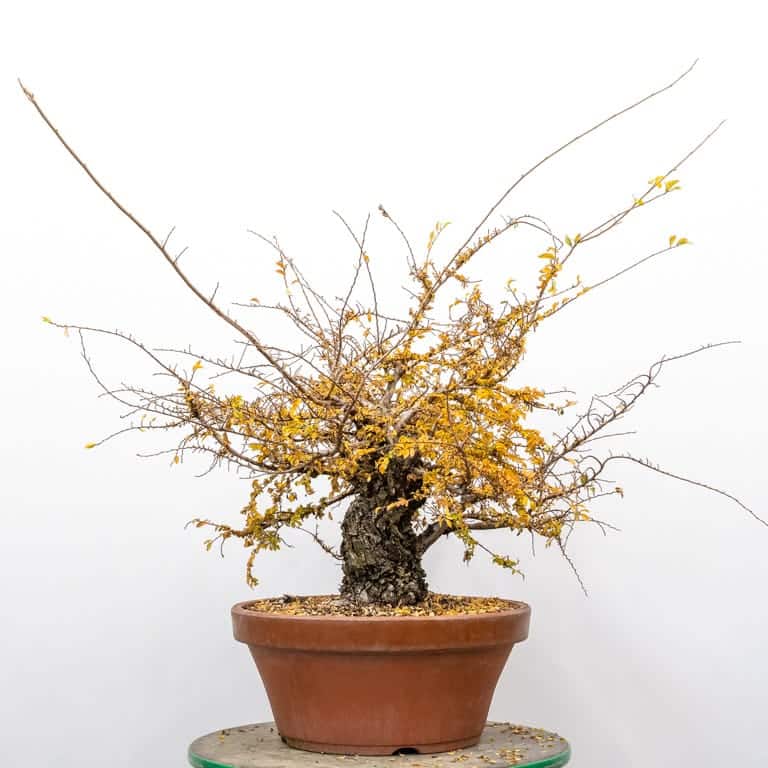
Cork bark elm – December, 2024
Before I started pruning, I removed the leaves so I could see the branch structure more clearly.
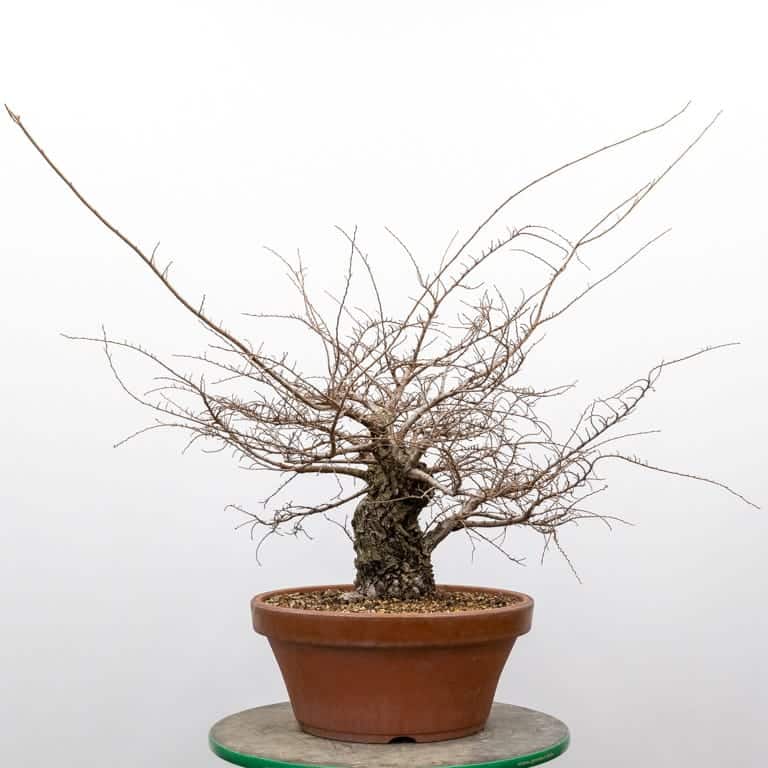
After removing the leaves
Now that the roots are growing in bonsai soil and the tree is producing strong growth, I can focus on improving the branch structure. I did this by shortening long branches and thinning congested areas. Here’s an example.
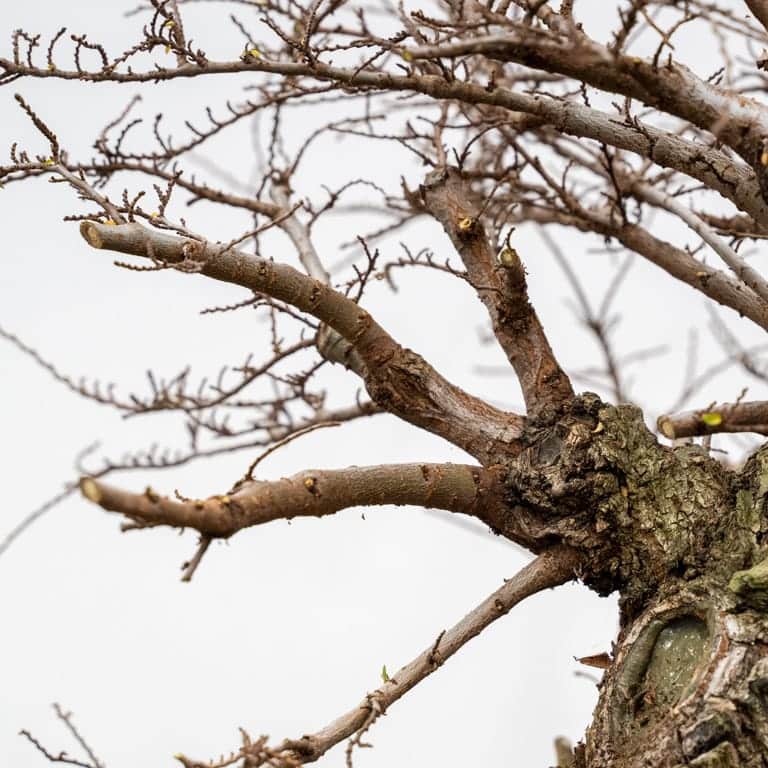
A large branch that divides into four large branchlets
To avoid additional swelling in this area, I removed two of the four branches that emerge from the same spot.
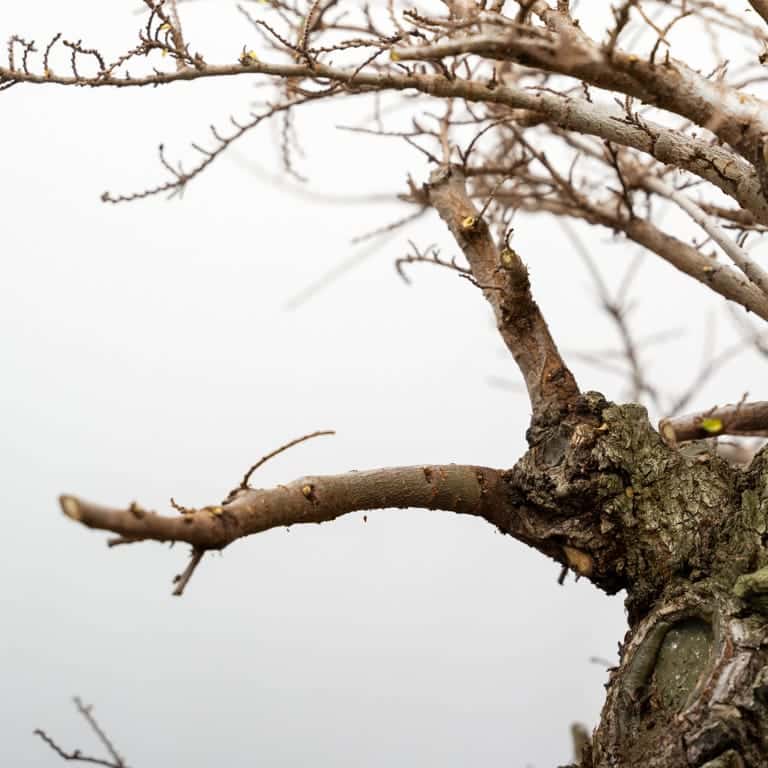
After removing two of the four branches
Because these branches lack structure, I shortened them to encourage new buds to form near the cut sites.
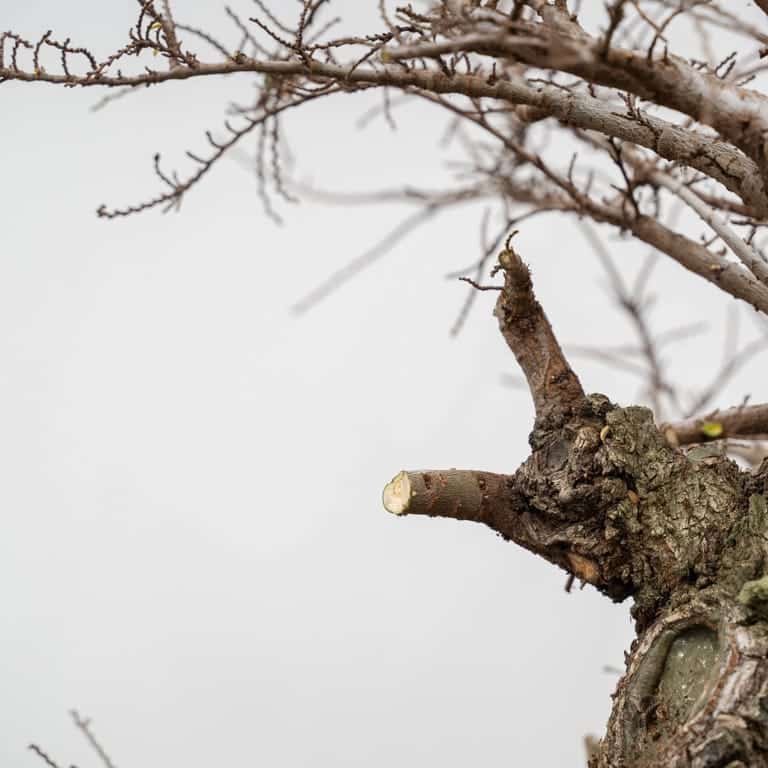
After reducing the branches
Here’s what the tree looked like after thinning crowded areas and shortening the long branches.
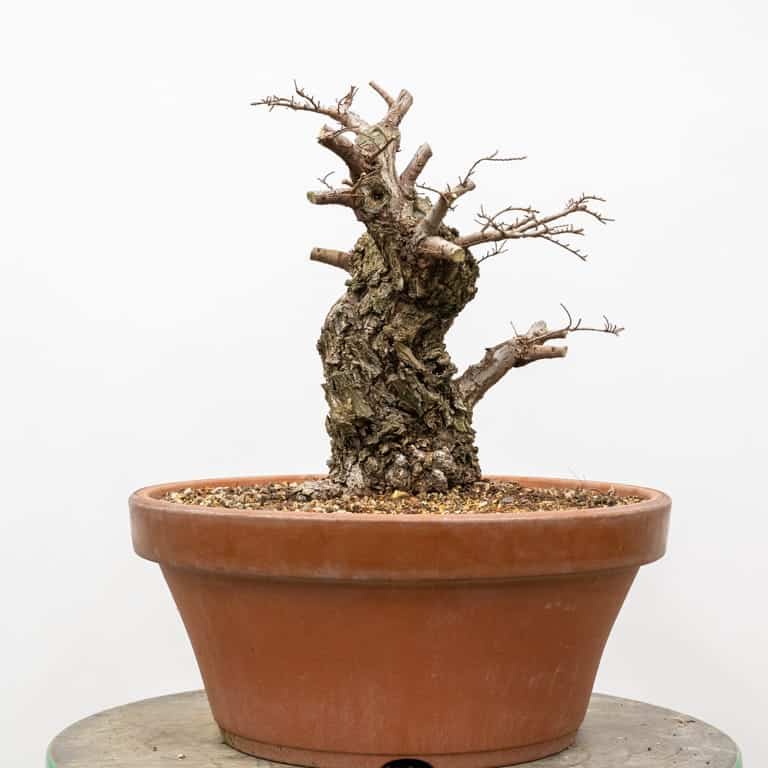
After pruning (14″) – candidate front #1
Another option for the front is to rotate the tree so that the large branch on the left side is visible.
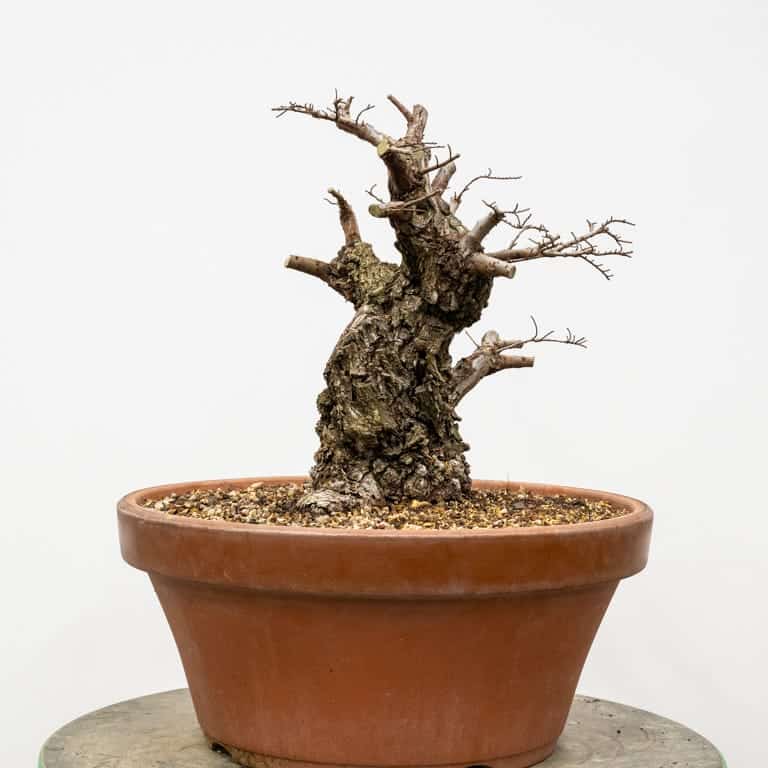
Candidate front #2
The other side of the trunk makes a great “back” for the tree as all of the scars are on this side.
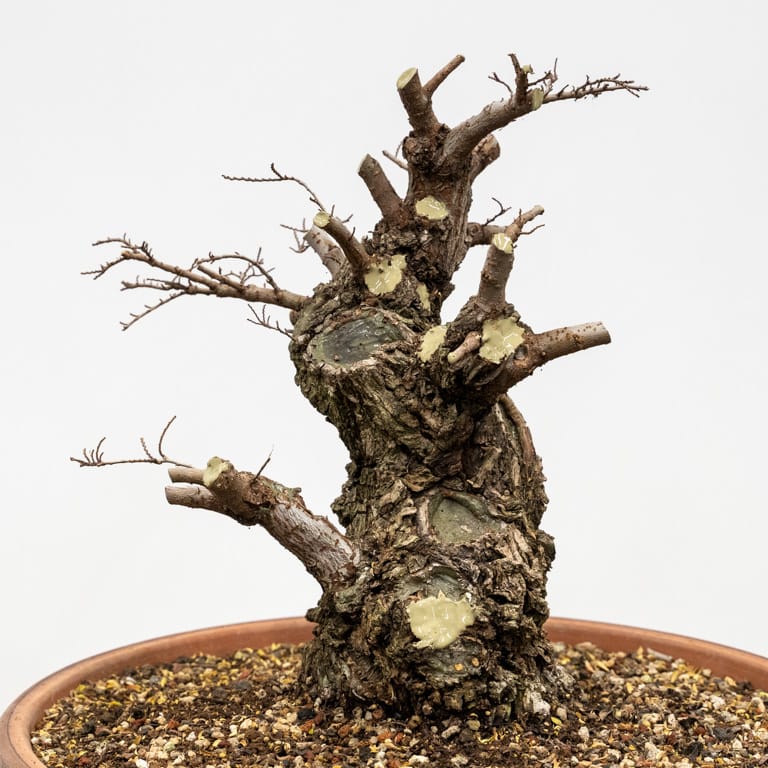
Scars on the back of the tree
The main reason I left the large branch midway along the trunk is that I wanted to avoid making another large scar.
Not totally satisfied with my options for the front, I tried tilting the tree to the left and right sides to see if that could make a difference. Tilting the tree to the right made the upper section of the trunk point straight up so that wasn’t a good option. Tilting it to the left, however, could be interesting.
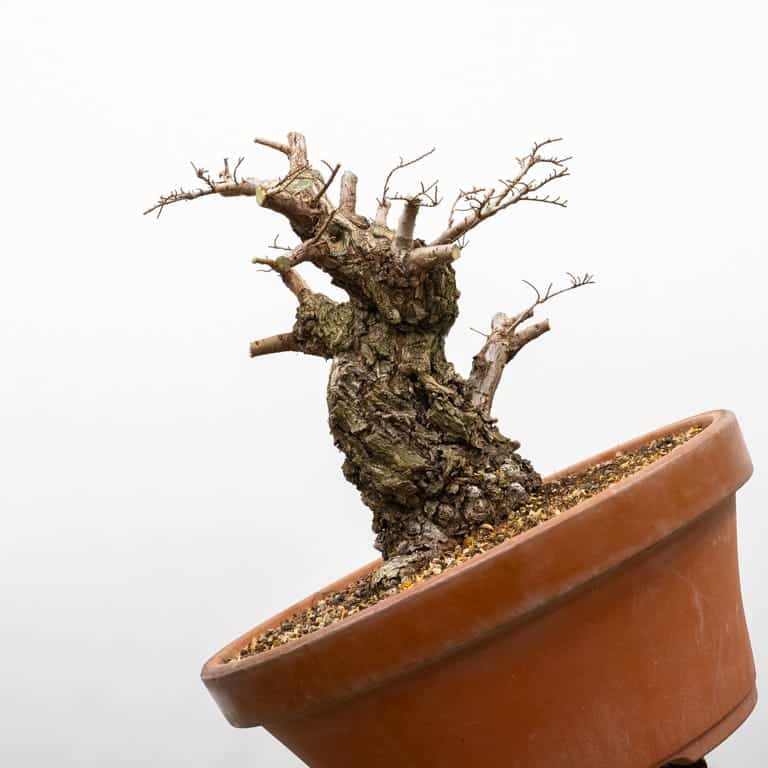
New angle – candidate front #3
The tree doesn’t need repotting for another year so I have time to think about which approach makes the most sense. In the meantime, I’ll let the tree grow freely until May or June at which point I’ll check to see if it’s ready for pruning again.
News & Updates: Register Now for the California Shohin Seminar
If you haven’t registered for this year’s Shohin Seminar, now’s the time! The event will be the 19th biennial Seminar – an awesome achievement by the organizers. Affectionately known as one of the more fun bonsai events of the year, the event is a fundraiser for the Bonsai Garden at Lake Merritt.
The weekend will feature a shohin exhibit, demonstrations, and lectures all relating to shohin bonsai. (On Sunday morning, I’ll be presenting on shohin display basics using trees from the exhibit.) The main events, however, are the Saturday workshops.
You can see a complete list of available workshops on the event website. I’ll be leading a workshop on mini-exposed root pine bonsai (spots are available at $130, $230, and $295). These trees will be tiny (between 2-4″ tall, see photo below). Some will already have exposed roots, and for others, the job will be to start exposing the roots.
To register for the weekend or sign up for a workshop, download and complete the appropriate registration forms. You can also register when you arrive, but space in the workshops may not be available last minute.
The event will be held at the Hotel Mission De Oro in Santa Nella, California, from January 31 – February 2, 2025. Learn more at the event website.
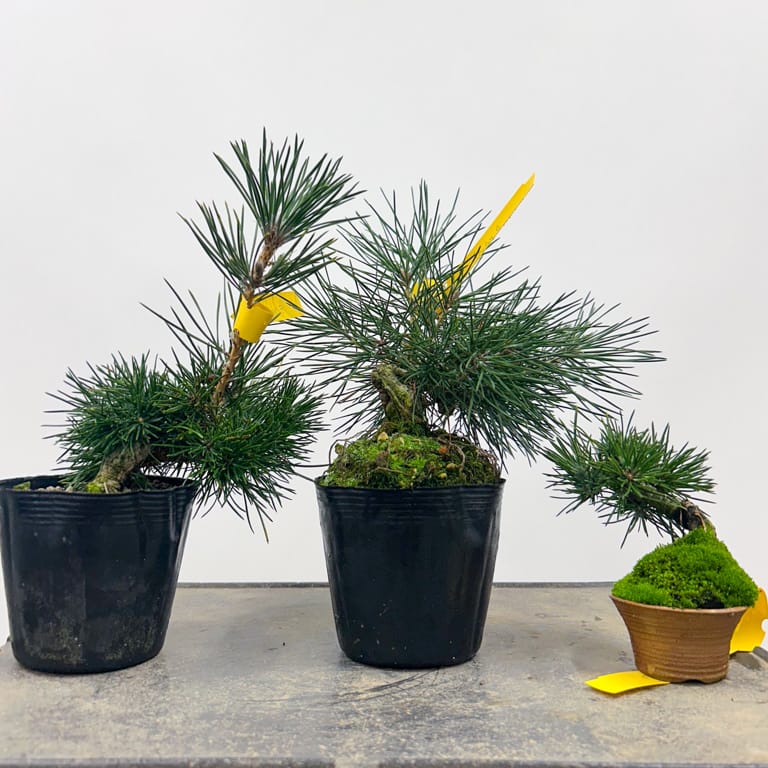
Sample pines (from left to right) for the $130, $230, and $295 workshops



